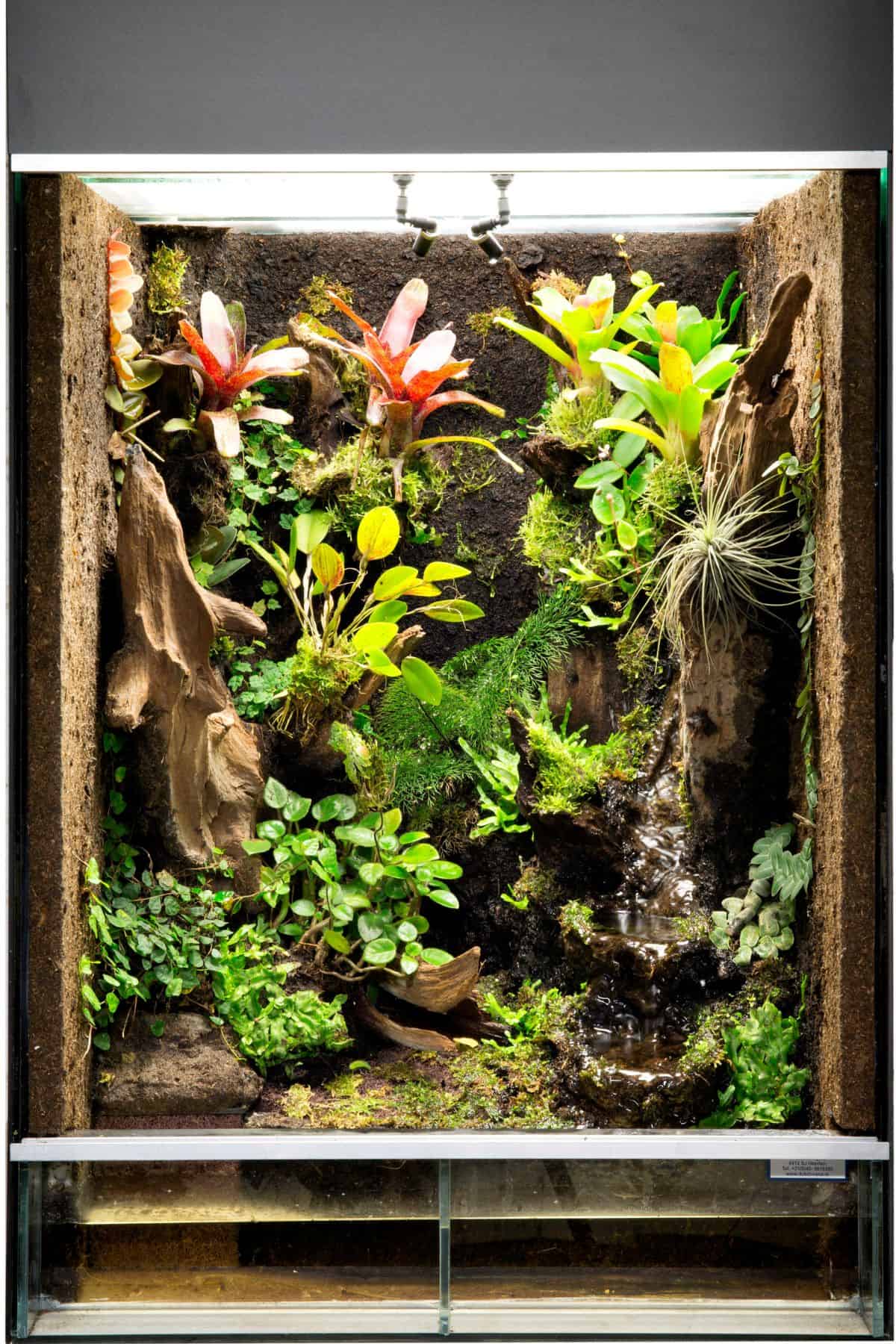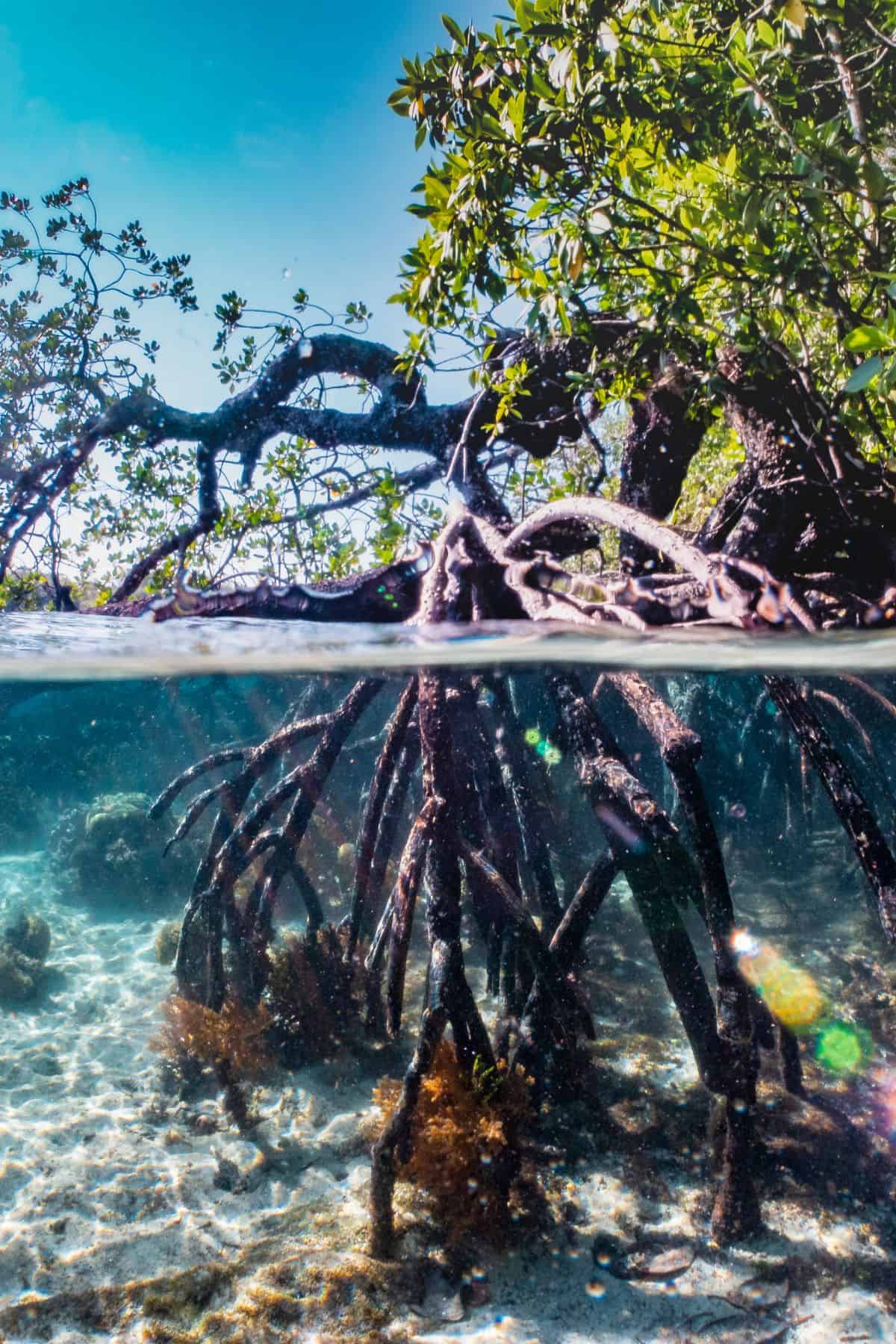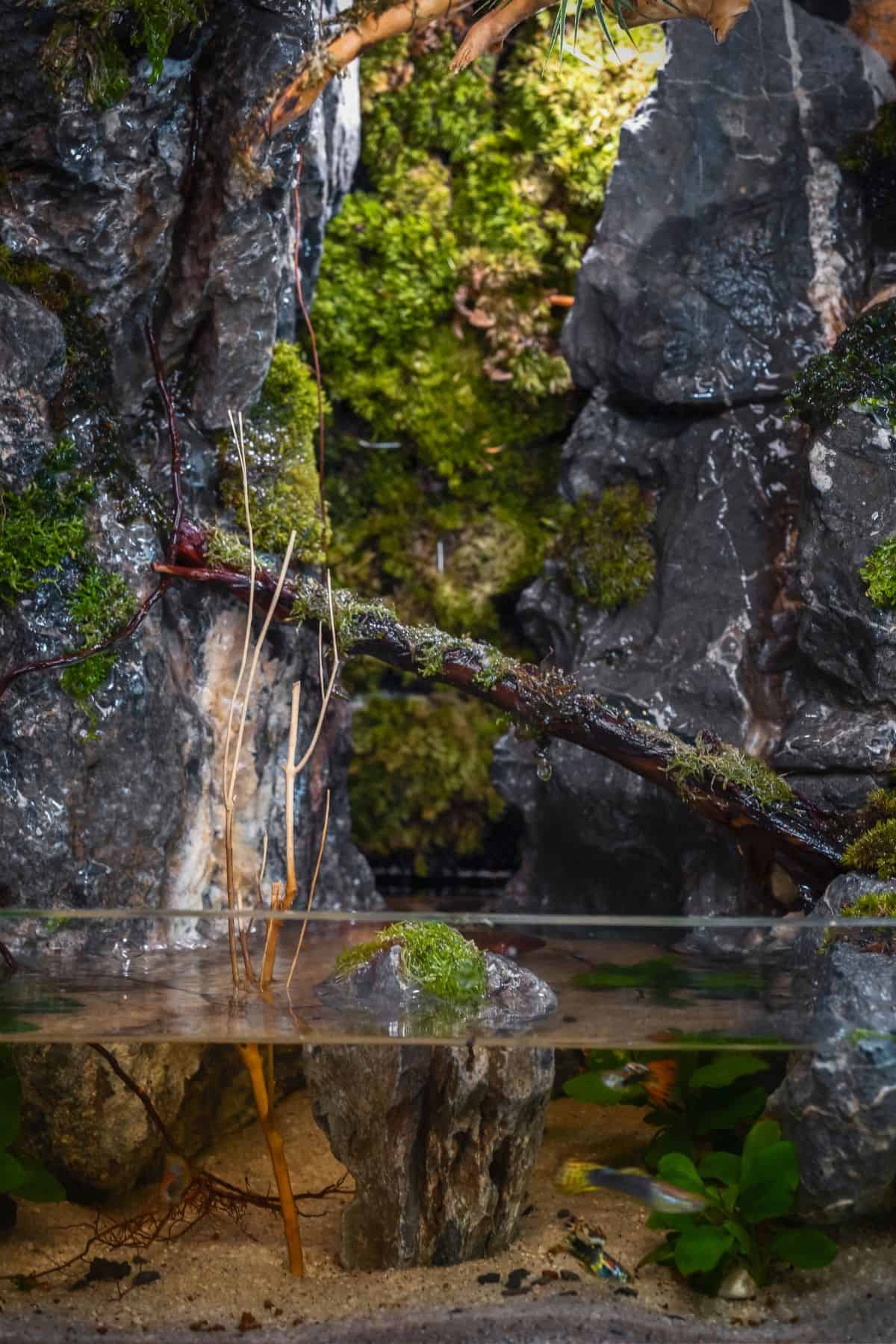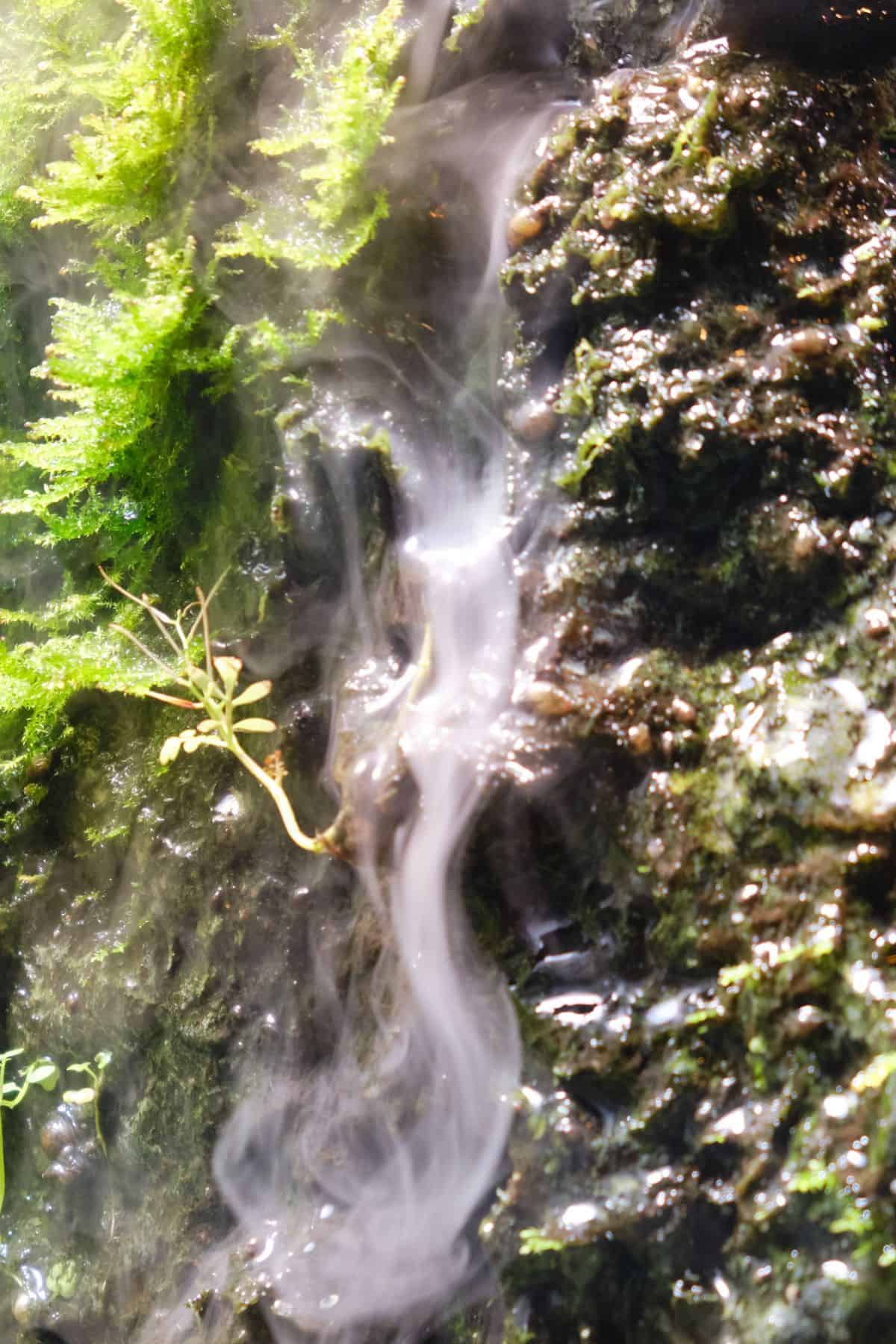Today, we’re exploring a dynamic range of paludarium ideas.
Looking at everything from the award-winning aquascaping styles that look to recreate exotic jungle and mangrove environments, to new alien worlds and curious constructions.
Seriously, the possibilities are endless when it comes to these semi-aquatic habitats.
Few plants are off limits when there’s this much versatility in design!
With that in mind, we’ll also cover the main points you need to consider when choosing a paludarium idea. So you can optimize your project around your design and get it started on the right foot.

Terrarium Tribe is reader-supported. When you purchase through links on our site, we may earn an affiliate commission (at no further cost to you). 💜
Paludarium Ideas Overview – Where to Start?
There are a lot of elements to pull together in a fully realized paludarium idea.
Balancing your wants (a super cool waterfall feature?) with the needs of the plants and the project can be tricky – but it’s half the fun!
Here’s where to start the process.
The first is the overall theme of the build.
- Which natural environment are you trying to recreate? Finding inspiration for paludarium stocking ideas isn’t hard if you look to the natural world.
- Which plants would you like to use? Terrestrial, semi-aquatic (submerged or emersed), carnivorous?
Next are the practical elements.
A paludarium is typically split between a water, land, and canopy portion. Each provides an opportunity to explore different plants, materials, and animals. But they must also work together as a cohesive environment.
- How much water vs land do you want?
- Which substrate and tank are the most suitable? You might want to consider a completely semi-aquatic design.
Finally, you can think of what kind of paludarium animals you might want to stock your tank with. A bioactive cleanup crew is a standard addition, but you can consider everything from reptiles to fish (or both in the right environment).
See our complete guide on how to make a paludarium for more guidance.
Dynamic Paludarium Ideas to Try (+ Stocking Recommendations)
1 | Rainforest / Jungle Style Paludarium

Jungle Style is a classic aquascaping approach that brings a lot to the paludarium table.
The contrast between the structured driftwood hardscape and wild plant growth really brings the scene to life. Everything from the pool to the canopy is bursting with color and contrast.
Let’s start with the land area and your terrestrial plants. Like any naturalistic tropical terrarium, you’ll want to create a sense of density and variety in the foliage. Generally, the key here is to use a wide range of plants that mimic the natural variation of a diverse rainforest environment.
You’ll need a tropical substrate (e.g., standard ABG Mix or a variation of it) that’s kept separate from your water area.
👉 Our tropical substrate mix could be a good option.
Larger ferns and carpet-forming vines can be used to great effect to create the illusion of density.
- Maidenhair Ferns and Sword Ferns can add some much-needed size and texture. At the same time, something like a Selaginella or a Pilea glauca can be used to form the undergrowth.
To achieve the effect of a lush canopy, you’ll want a taller paludarium tank that can house a generous amount of branching structures and epiphytic plants.
- Neoregelia Bromeliads can add an exotic flourish and offer some great climbing opportunities for dart frogs and tree frogs. Smaller epiphytic ferns (e.g., Bolbitis) can also be used to add some texture and greenery to the canopy.
Finally, the water feature tends to be relatively straightforward here compared to some of these other ideas, but a simple freshwater pool is a great addition to pull together the scene.
- Freshwater fish are a common addition (e.g., Mollies). They’re an easy way to bring the water element to life without worrying about interactions with any land animals in the paludarium. Liberal use of aquatic moss (e.g., Java Moss) can add greenery without the fuss.
2 | Brackish Marsh / Mangrove Paludarium

Brackish water is found where saltwater and freshwater mix.
As you might imagine, you’d typically find these environments at the coast where a body of water meets the ocean, e.g., estuaries and swampy marshes.
But there’s one such brackish environment that can be recreated in dramatic visual fashion in a paludarium.
The answer? Mangrove forests.
Here, specialized trees and shrubs grow in brackish waters. Their gnarling roots and murky, watery environment cast a moody overtone, which can wonderfully contrast with a brighter terrestrial scene.
It’s kind of the Jungle Style in reverse, with the underwater environment being the star of the show.
Here’s how to do it.
First, we need to create a structured underwater hardscape.
You can do this using one large driftwood branch that forks into smaller ones. Turn it upside down, and you have yourself a mangrove tree! Alternatively, you can combine smaller branches to achieve the same effect.
Though actual mangrove roots appear to be available on Amazon as driftwood, there’s not much of a range. I’d consider using something like this Ghostwood instead. It can provide a similar effect with a much greater degree of shapes and sizes.
- Naturally, you’ll need brackish water plants for your underwater scene. Try Java Ferns (Microsorium pteropus), plus Anubias and Cryptocoryne species.
- Only certain fish can thrive in brackish water, but the likes of Mudskippers thrive in it.
Most of the builds I’ve seen forego most (or all) of the “land” portion of the paludarium, choosing instead to add their above-water plants epiphytically. Raising your plants (and sticking with just green) also helps to create the illusion of the leafy tree foliage.
- You can add pockets of a tropical substrate to the background to house larger plants like Maidenhair Ferns and palms. Or, you may be able to add your semi-aquatic epiphytic plants directly into the crooks of the branches (e.g., Cryptocoryne) if your humidity is high enough.
3 | Cave / Waterfall Paludarium

Stacking (and most likely gluing) lightweight aquascaping rocks like Dragon Stone or Seiryu Stone can be a great way to create all sorts of dynamic rocky environments.
You could slope them up one side to create a large waterfall or stack them on both sides to create a cave-like effect. If you’re brave, you can even connect the sides to create a suspended cave roof!
Though an open ravine looks great too, you just need the water to pool at the bottom.
Try bringing your stack of rocks right up to the foreground – and place them lower in the back – to create a frame with a strong sense of scale.
Naturally, square tanks tend to work better here, as you’ll need tall sides for these builds.
Much like the Mangrove Forest, you’ll be planting most of your plants epiphytically. Either using pockets of substrate where necessary or adding them directly to the rock.
- Semiaquatic epiphytes like Anubias and Bolbitis are likely best in this scenario. I’d also add moss liberally (e.g., Hypnum Moss) to add some easy greenery.
Realistically, you will need a misting/fogging system here, as it’ll take a lot of work and humidity to keep all these epiphytes consistently moist.

Here’s an Amazing example I found on YouTube (by MugenWoong) that pulls this off perfectly.
4 | Volcano Paludarium
Taking the waterfall paludarium to the next level is my idea for a volcano paludarium!
In the same way that a waterfall uses a sloped stack of rocks, what if we used volcanic rock (i.e., Lava Rock) to create a pointed volcano shape?
Using a water pump to push water through the center and out the top, we’d create a 360° waterfall… of sorts.
In fact, Lava Rock is actually the perfect material for this, as it’s super lightweight and porous. So any water pumped through it will effectively “soak through” the rock instead of just running off it, which makes growing epiphytes on it much easier.
It’s kind of a scaled-up Wabi Kusa.
Here’s a small example from James Wong’s Instagram that’s even growing a Ficus bonsai tree on top.
Over to You
Here, we’ve covered some classics and some more… out there concepts.
What’s been your favorite of these paludarium ideas on the list?
Let me know in the comments!
